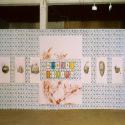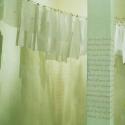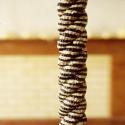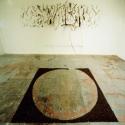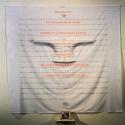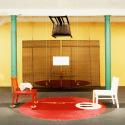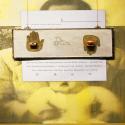Yung, Rene
Other Names: 荣美立
"My work is about being, memory and place.
As an immigrant to the United States who grew in colonial Hong Kong--schooled by Catholic nuns, taught in the Confucian tradition of my forebears, then dropped into the midst of the Californian Age of Aquarius as a teenager--it is inevitable, and above all, necessary for me to look at the world through cross-cultural lenses. I see, think and work in the multifaceted, multiviewpoint way of the transcultural. Amidst the diasporic interweaving of society, my interest is in excavating to the core of cultural identities--the ethos, sensibilities and unspoken details of daily living which are often difficult to discern at casual glance, and which both set cultures apart and yield unexpected universals.
My experiences as an immigrant, and earlier, as a nationless Hong Kong Chinese under a British colonialism running against the clock, underscore the fragility of home and community as basic extensions of identity. And so, beyond cultural concerns, my work speaks of an underlying impermanence and mutability--and their flip side, a longing for a place in the flux that truly feels like home.
I work most often in installation form. It appeals to me as an art form which allows discourse across categories and boundaries in a way similar to life experiences, and it provides a platform from which I can connect my roots in Chinese lyrical-narrative sensibilities with my interest in Western conceptual thinking, textual communication and spatial experience. I am deeply interested in the structure of installations as a means to convey content. My recent work has focused on developing a visual and structural language which synthesizes a textuality of materials, ideas, and spaces, to convey the concept as well as the emotions of a piece. For me, works are palpable as the materiality of objects, and things have an inner spirit that speaks, and in my work, everything is language. In that language I am looking for the poetry that connects word, object, place, sound, and time, in the way that the Chinese language combines concise tonal units of sound and meaning into a fluid whole.
In earlier works, I juxtaposed a kind of spare visual minimalism against complex internal content. Yet, the more years I spend in America, the more I have come to desire a form more integral with my cultural source. I became fascinated with the concept of heterophony, a form unique to Asian music where different instruments of an ensemble play the same song in monophonic unison, but with idiomatic articulations and variations unique to each instrument--which to Western ears may sound cacophonous. In the visual heterophony of my installations, I am seeking both the sensory density and the experiential permeability of the transcultural experience. Rather than the language of modern internationalism in art, I have become interested in the jostling vernacular born of my past.
As Trinh Minh-Ha put it: 'In the complex reality of postcoloniality it is… vital to assume one’s radical "impurity" and to recognize the necessity of speaking from a hybrid place, hence of saying at least two, three things at a time.'"
Rene Yung, Artist Statement, [1999]
Gallery of Selected Works
Selected Documents
- Artist Production Plan for "Proper Dream - II"
- Artist Resume, [2002]
- Artist Statement for "TAKE ROOT" at the Chinatown Branch Library
- Artist Statement(s)
- Essay by Dana Friis-Hansen from exhibition catalog, TransCultue: La Biennale di Venezia 1995
- Exhibition flyer for "Rene Yung: mountainriver", Hostfelt Gallery, 2002
- Exhibition postcard for "Rene Yung: mountainriver", Hostfelt Gallery, 2002
- Exhibition press release for "mountainriver: A new installation by Rene Yung", 2002
- Flyer for "A Celebration of Aging", On Lok, Inc.
- Review "In Venice" in Artweek, September 1995
- Review "Rene Yung at Hosfelt Gallery" in Artweek, February 1997
- Exhibition flyer for "Detained", Asian American Arts Centre, 2006
- Exhibition press release for "Detained" panel discussion, Asian American Arts Centre, 2006
Other Links
- Rene Yung at Women Artists of the American West
- WorldCat Identities Bibliography
- WorldCat Identities Bibliography
View artist folder list at Asian American Arts Centre

